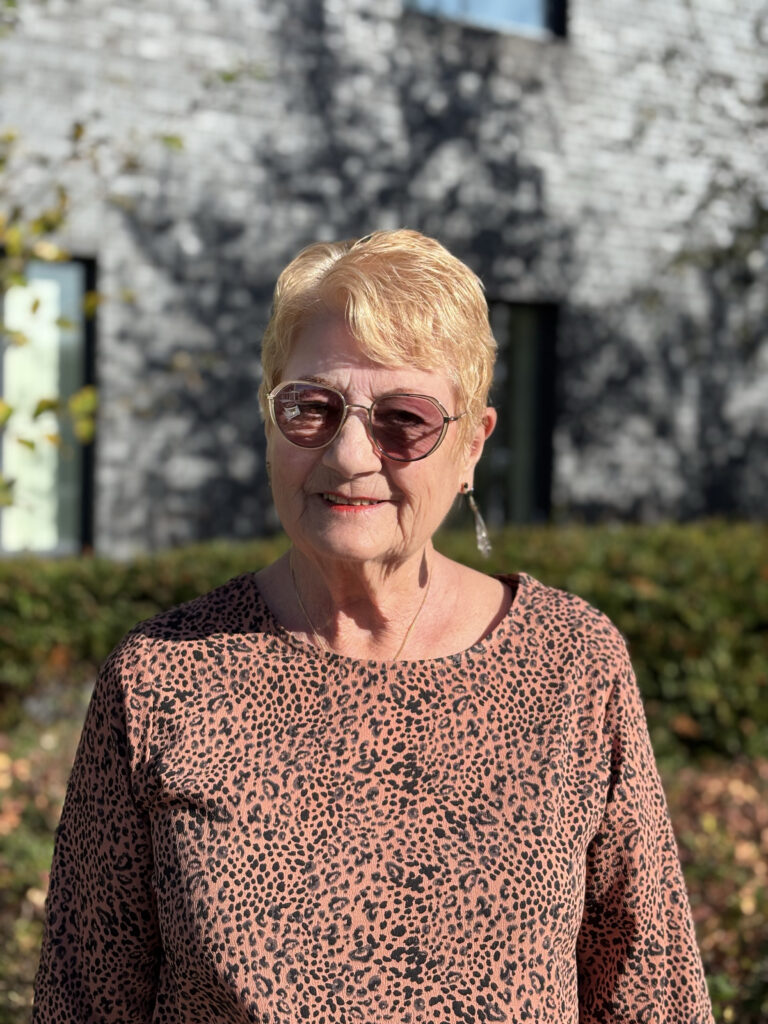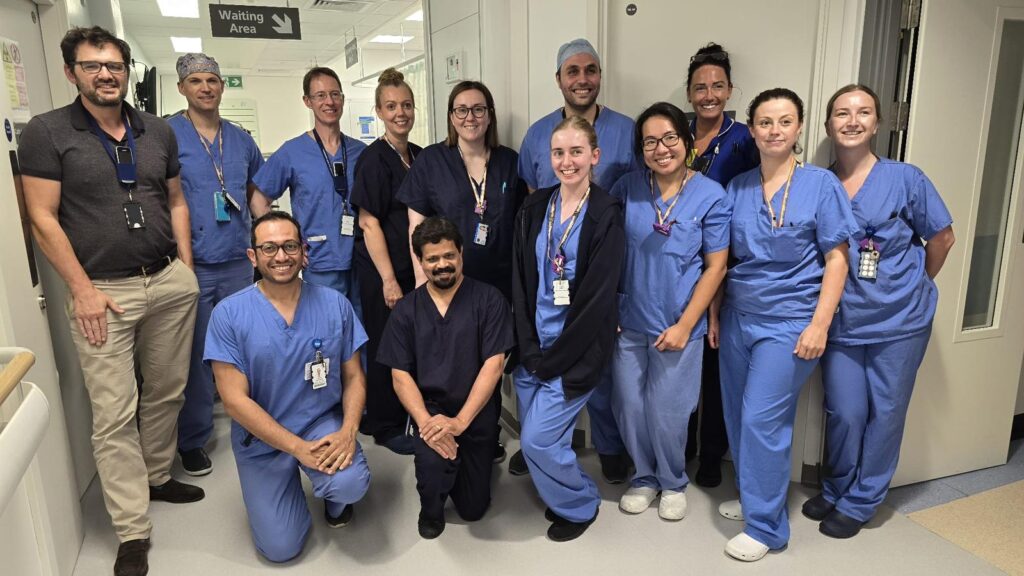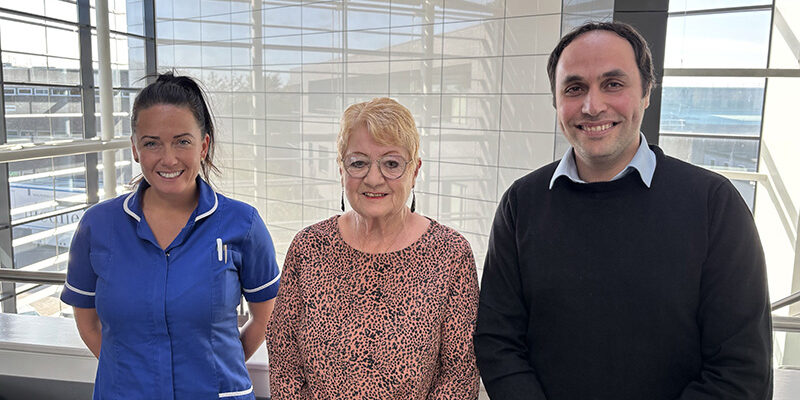The heart team at Newcastle Hospitals have carried out their 2000th transcatheter aortic valve implantation (TAVI) to replace a woman’s heart valve.

77-year-old Kathleen Scarth from Cramlington was the 2000th patient to have this life-saving procedure after developing aortic stenosis, a narrowing of the valve.
Kathleen started to feel unwell when on holiday in Spain earlier this year, she explains: “I noticed that I had started to lose my breath easily whilst I was on holiday. I would have to stop to catch my breath when out on a walk.
“A friend of mine came over to visit me, she said ‘that is not you’, and she encouraged me to go and see my doctor.”
After returning to the UK, Kathleen visited her GP who referred her for tests to see how her heart was functioning. Katheleen was shocked when she was told the results: “The cardiologist at the hospital said it was one of the worst cases they had seen.”
Kathleen was referred to the Freeman Hospital in Newcastle for a minimally invasive procedure to replace the valve in her heart known as a TAVI.
Consultant cardiologist, Mohammad Alkhalil, who performed the procedure on Kathleen, shared some eye-opening statistics about the condition: “10% of patients over the age of 80 have narrowing of the heart valve. This often starts off mild and becomes severe quickly. Left untreated, 50% of patients will die within two years.”
Under local anaesthetic, a TAVI procedure uses a catheter which is inserted into a blood vessel in the leg. The catheter is then used to guide and fix a replacement valve over the top of the old one.

Newcastle’s Freeman Hospital has been performing TAVIs since 2008 and Kathleen was their 2000th patient, Dr Alkhalil continues: “Around 30-40 years ago, the only treatment we had for patients was open heart surgery to take the valve out.
“Now, due to advancements in technology, we are able to offer this far less invasive procedure under local anaesthetic. The procedure can be completed in under an hour and we sometimes see patients go home the same day.”
This simple life-saving treatment means patients do not require a long stay in hospital, but the outcome is still transformative, as Kathleen explains: “After coming home following the procedure my breathing is much better. Before, I could not walk properly without sticks and my whole body was tired.
“I am no longer walking with sticks and slowly I am starting to exercise again. I have a 70th birthday party to attend later this year – dancing is my passion, so I am looking forward to taking to the dancefloor.”
